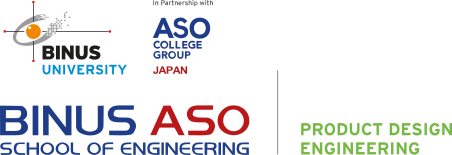Trends in CAD and Product Design 2022
Product Design Engineering (PDE) Program in BINUS ASO School of Engineering (BASE) is constantly striving for the best for its students. PDE Program is aiming at the alignment toward the current trends in 2022 in particular its Computer Aided Design (CAD) and Product Design Trends in 2022.
This article elaborates Trends in CAD and Product Design 2022, as the aforementioned design is originated source and adapted from https://www.ptc.com/en/blogs/cad/2022-cad-trends, https://www.cadcam.org/blog/3d-printing-trends-in-2022/ and https://www.youtube.com/watch?v=ZmSS0bOe73c and https://www.youtube.com/watch?v=oWmP9YX_hjY
https://www.youtube.com/watch?v=oWmP9YX_hjY
3D Printing constitutes trends beyond CAD and Product Design in 2022, then, it considers cost reduction to enhancement in efficiency to promoting innovation, 3D printing is giving rise to almost every manufacturing industry and has made a significant impact in additive manufacturing. Looking back at the development of 3D printing to see how its occurrence began and how it has enabled the manufacturing industry to evolve.
As the world evolves, 3D printing has continued to make trends over the years, and new technologies give rise to making 3D printing more versatile. It is exciting to see the advancement of 3D printing and to see how manufacturers from various industries work together to improve the industry and economy.
Let see how 3D printing has evolved…

Polymer spools and metal powders are popular 3d printing materials
Polymers are known to be one of the most used 3D printing materials
Over the past few years, the polymer 3D printer has remained active, offering more materials and faster processes, geared towards industrial applications. There continues to be a high demand for the polymer, as it remains the leading 3D printing material segment in terms of market share.
The polymer 3D printer has been attractive to manufacturers because of its ability to offer better productivity. From an extensive range analysis, the polymer 3D printing market is expected to generate $11.7 billion in revenues in 2020 alone. This growth is said to be driven by the powder bed process, which has risen sharply in recent years.
Nevertheless, the diversity of polymer has made it feasible for 3D printing service providers like us, to design parts with mechanical, physical, or chemical properties close to those of the manufacturing sector. This now includes some fantastic composites and high-temperature polymers.
Increased metal material producers across AM value chain
As the number of companies manufacturing materials for metal 3D printing proceeds to expand, their roles alongside the AM value chain continue to increase. Some are strategically acquiring other firms, while others are restructuring their industry. Think of Shining 3D. They have come out of no-where to a very impressive line of metal printers, like the Shining EP-M150 and EPM250.
Increase in metal powder production
As a result of this demand, there has been a rise in suppliers joining the industry. Those who have been in the industry, such as 3D Systems and Stratus are ramping their metal production capacities.
Metal powder producers like BASF are looking to supply material for powder-based processes like Selective Laser Melting (SLM), Binder Jetting, Electron Beam Melting (EBM), and powdered Direct Energy Deposition (DED). These printing methods presently on a dominant development trajectory.
Focus on high-performance thermoplastics has boosted
As moderately simple plastics like PLA and ABS continue to dominate the polymer market, there is a growing demand for durable, functional materials that can resist the harsh environment and high temperature. Due to this, the 3D printing industry is establishing high-performance thermoplastic like ULTEM, PEKK, PEEK, and carbon-reinforced composites.
The introduction of high-performance thermoplastic materials with incredible resistance to high temperature has encouraged manufacturers to 3D print operating prototypes and even end-use parts for a range of industrial applications. These materials have a heat deflection capability of up to 230°c and a glass transition of 247°c, which is speculated to be the highest of any 3D printing material.
Besides, these materials also offer impressive chemical resistance, liquid containment, extraordinary flame retardant properties, and maintain its mechanical stability at high temperatures.
The advancement of this high-performance thermoplastic has been significant for the industrialization of Additive Manufacturing (AM). They support the evolution from prototyping to advance applications in critical industries like aerospace and medical.
The explosive growth of elastomeric materials
In just over six months, there have been different proclamations around elastic and rubber-like properties that are flexible for 3D printing. Most 3D printer manufacturers have jumped on this bandwagon.
Progressive companies are now applying elastomeric materials in industrial, consumer, and medical applications. They produce parts that are flexible and soft yet durable with an excellent wear property.
This continued demand for flexible materials fuels the development, like silicone and TPU. These provide an excellent tear strength and energy return.
The availability of elastomeric materials has enabled companies to unlock new applications and benefit from 3D printing in many further niches.
Availability of new materials for AM
Metal powders are notoriously tough to develop, let alone to certify. Nevertheless, improvement in this segment is continuous. Companies like Arkema, BASF, the Dressler Group, Evonik, Henkel, and Lehmann & Voss are spending millions developing the next generation of Additive Manufacturing materials.
With all these activities edging to the metal AM industry’s active state, the ultimate indicator of its development is an ongoing material evolution.
The aim is to use 100% of the material to infiltrate the supply chain, providing AM end-users with a new means to manage project expense and control supply chain, while also introducing tremendous sustainability in metal AM.
Conclusion
As 3D printing continues to evolve around every industry, many manufacturers are getting more attracted to this innovation. Therefore, many predictions have arisen, saying its tendency to dominate in years to come is certain.
Despite that, there is no doubt that 3D printing is making its way to play a vital role in developing the world’s economy and creating opportunities for those in the manufacturing sector. Within the next 5-years, there won’t be anything that cannot be printed – faster – cheaper = and better – than traditional manufacturing & CNC techniques.
https://www.youtube.com/watch?v=ZmSS0bOe73c

Comments :